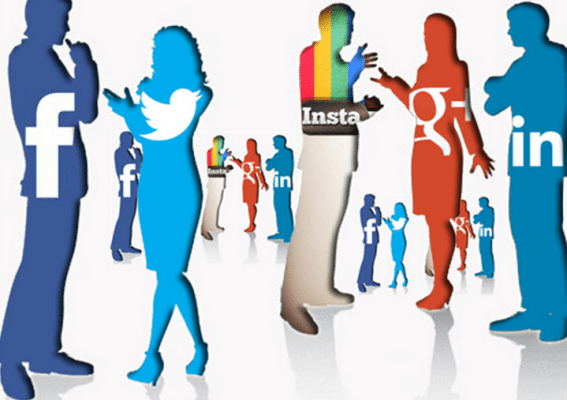Employee Advocacy is where we are now seeing the effects of Social Media and the power of Social Networks work on behalf of the employee and brand together, however only if done correctly. Otherwise, it’s just another brand request which can work against us or fall on deaf ears!
First let me share my favorite definition of this most recent hot topic.
Employee advocacy is defined as, “the promotion of an organization by its staff members.”
A business may ask employees to actively promote the organization, often through social media, as an element of their jobs. However, the most compelling employee advocacy consists of freely-offered communications on the part of the workforce. The question of whether or not staff members are likely to freely promote an organization is highly related to the degree of employee engagement in the workplace, and employee engagement is largely a factor of the corporate culture and the employer’s ability to make working for them a positive experience.
Source: http://whatis.techtarget.com/definition/employee-advocacy
How strong is it?
So many brands are working on this effort, and there are so many variations that it is tough to gage how strong it is across the board. It still feels like it is brand and content driven rather than people driven. We believe that there must be an initiative to train and coach employees so they understand the benefit themselves (WIFM) first, then for the brand. From our observations, these brands are the strongest.
Being a “show me” type person, I have put down some of the stats that jump out at me as we research the net and ask our friends focused on this space. I especially like the lift on blocking stat by Gartner, this shows that even the most compliant environments are loosening up and shifting to the employee being trained and doing the right thing on behalf of themselves and the brand.
What are some of the benefits?
HR and Company Culture – As employees become part of the “brand” culture, they automatically become raving fans and attract their network to that workplace. See some of the evidence below.
Sales and Marketing Leads – Employees hold a stronger voice than most brands, meaning that people trust other people before they trust brands. If you activate the culture, you then activate the brand from a better position. See the stat below that employee content ranks over brand content shared by over 8x.
Employee Communications – Great communication, produces great everything else. Once people communicate internally and externally with social media, then all areas work in part on behalf of the whole company.
Brand Awareness – When we speak of humanizing the brand, it brings life through the employees to the brand. It’s an automatic trust builder. People trust and buy from people, they pay attention to what their friends say and do. This supports and builds the brand faster than any other method, and at a lower cost!
What is the Evidence?
General Advocacy
- 77% of buyers are more likely to buy from a company whose CEO uses social media (Source: MSLGroup)
- Social CEOs are much more likely to be seen as good communicators than unsocial CEOs (55% vs. 38%, respectively (Source: Weber Shandwick)
- Leads developed through employee social marketing convert 7x more frequently than other leads (Source: IBM)
- According to Gartner, the number of companies blocking social media access for employees is dropping at 10% per year. 50% blocked access in 2010 – less than 30% blocked in 2014. (Source: Gartner)
Sales :
Marketing Perspective
- The average cold calling appointment rate is 2.5% (Source: CEB)
- B2B buyers complete 57% of the buying decision before they are willing to talk to a sales rep.(Source: CEB)
- 92% of buyers say they delete emails or voicemail messages when comes from someone that they do not know. (Source: A Sales Guy Consulting)
- Content shared by employees receives 8X more engagement than content shared by brand channels (Source: Social Media Today)
HR Perspective (Source: Jobvite):
- Employee referrals have the highest applicant to hire conversion rate – only 7% of applicants are via employees but this accounts for 40% of all new hire hires (Source: Jobvite)
- 67% of employers and recruiters said that the recruiting process was shorter and 51% said it was less expensive to recruit via referrals (Source: Jobvite)
- 47% Referral hires have greater job satisfaction and stay longer at companies (Source: Jobvite)
- Employees of socially engaged companies are… (Source: Altimeter & LinkedIn Relationship Economics 2014)
- 57% more likely to align social media engagement to more sales leads
- 20% more likely to stay at their company
- 27% more likely to feel optimistic about their company's future
- 40% more likely to believe their company is more competitive
How to jump start – Social Teaming
When we are training our clients, we use our methodology of social teaming. See: Social Teaming Definition. You are simply selecting a team of people inside the organization, then forming them into clusters and then becoming a hub. This can be started by following the simple guidelines below:
Every project starts as a pilot. It never happens when a company says, “yes, lets change our culture and breed employee advocates on behalf of our brand”. Although companies like Starbucks, IBM, Dell, Sprint, SAP and others have surged into Employee Advocacy with both feet, they all start as pilots. The great news is that you don’t have to be a fortune 500 company to make this happen. It’s imply a top down initiative and people are trained and supported on being advocates. So what are the steps we recommend and take with our clients?
- Determine which area to start, marketing, sales, HR, customer service, etc.
- Identify your champions, people who believe in the brand
- Define what it means it be an advocate of the brand
- Pick a platform that can make content access easy and manageable
- Create a training and coaching schedule. **
- Measure results and adjust program
- Select next group or area, repeat.
** Coaching is always on the bubble here and needs to be left in as a priority. Everyone learns at a different rate. They need support and a place to go for assistance.
Many times organizations make this the elephant project and then wait, delay and miss windows of opportunity, overspend on marketing, retention, recruiting, etc. While all along they just need to simply start to shift the culture to root and talk for the brand.
It is really easier than it feels. We love talking to companies and groups about this topic, so please call me if you want to have a discussion. The companies that get this will be growing and surging faster than their competition.







